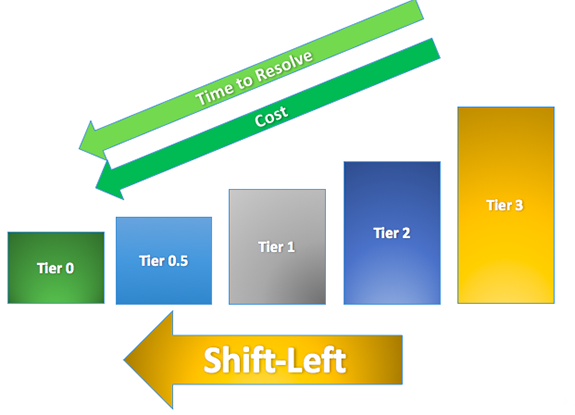Date Published September 15, 2016 - Last Updated December 15, 2016
In a recent Focus series post, I discussed Level 0, which we use to describe unassisted service, or self-service. In that post, I state that not every incident request is suitable for solution by the end user. Even if we have a superb user-accessible knowledge base and an easy way for users to apply updates and fixes by themselves, sometimes the user needs assistance. How much assistance they think they need determines—to a great extent—how they contact support. For complex inquiries, people like talking to other people in real time.
But what if they just need some very basic assistance? What if they want to ask a series of questions that get to the bottom of their issue, but may not need active intervention by a technician? Perhaps automation is the answer.
Many in the customer service and/or technical support arena get defensive when the subject of automation is brought up. Customers often run into less-than-perfect systems and wind up saying, “Representative!” over and over again to get to live assistance. But we are seeing the dawn of a very different kind of automation, and people are adapting to it. Siri, Watson, and Amazon’s Alexa are all well-known examples of cognitive, interactive systems built to work with humans through natural speech and provide a wide array of answers and services. This cognitive technology is rapidly coming into the world of service and support with many companies using “chatbots” to carry on conversations via chat sessions, and even Amelia, who—at least according to the developers—can work at the service desk.
Automation, such as chatbots, could allow for even more work to be moved out of Level 1.

Where does this automation fit in? It’s not true Level 0 self-service, because there is an element of assistance. But the Level 1 staff in the support center will only become involved if the automation cannot deliver the information or service the customer needs.
Let’s call it Level 0.5 support. It’s some assistance and will likely be enough to keep most issues off the plates of the support analysts. If good Level 0 support keeps the simplest and most repetitive issues easily accessible to the end users, then good automation should be able to handle the repetitive work of answering those frequently asked questions that currently are handled by humans and assisting with tasks such as resetting passwords, helping locate information, and, in general, taking the scriptable work off the hands of humans.

For years, we’ve been talking about Shift-Left: Get the simple work out into self-service and move more complex work down to the front line. Automation such as chatbots could allow for even more work to be moved out of Level 1. This, in turn, would free up more time for Level 1 analysts to take on more complex work. As artificial intelligence (AI) improves, tasks of a more complex nature could be handed over to chatbots. Much of Tier 0 could also be absorbed by bots, relieving users of the need to go searching. Interactive AI agents could look at both internal and external knowledge sources simultaneously.
Chatbots and AI are already in use. It will be some time before automation takes over many of the tasks of support, but the day is coming.
 Roy Atkinson is HDI's senior writer/analyst, acting as in-house subject matter expert and chief writer for SupportWorld articles and white papers. In addition to being a member of the HDI International Certification Standards Committee and the HDI Desktop Support Advisory Board, Roy is a popular speaker at HDI conferences and is well known to HDI local chapter audiences. His background is in both service desk and desktop support as well as small-business consulting. Roy is highly rated on social media, especially on the topics of IT service management and customer service. He is a cohost of the very popular #custserv (customer service) chat on Twitter, which celebrated its fifth anniversary on December 9, 2014. He holds a master’s certificate in advanced management strategy from Tulane University’s Freeman School of Business, and he is a certified HDI Support Center Manager. Follow him on Twitter @HDI_Analyst and @RoyAtkinson.
Roy Atkinson is HDI's senior writer/analyst, acting as in-house subject matter expert and chief writer for SupportWorld articles and white papers. In addition to being a member of the HDI International Certification Standards Committee and the HDI Desktop Support Advisory Board, Roy is a popular speaker at HDI conferences and is well known to HDI local chapter audiences. His background is in both service desk and desktop support as well as small-business consulting. Roy is highly rated on social media, especially on the topics of IT service management and customer service. He is a cohost of the very popular #custserv (customer service) chat on Twitter, which celebrated its fifth anniversary on December 9, 2014. He holds a master’s certificate in advanced management strategy from Tulane University’s Freeman School of Business, and he is a certified HDI Support Center Manager. Follow him on Twitter @HDI_Analyst and @RoyAtkinson.